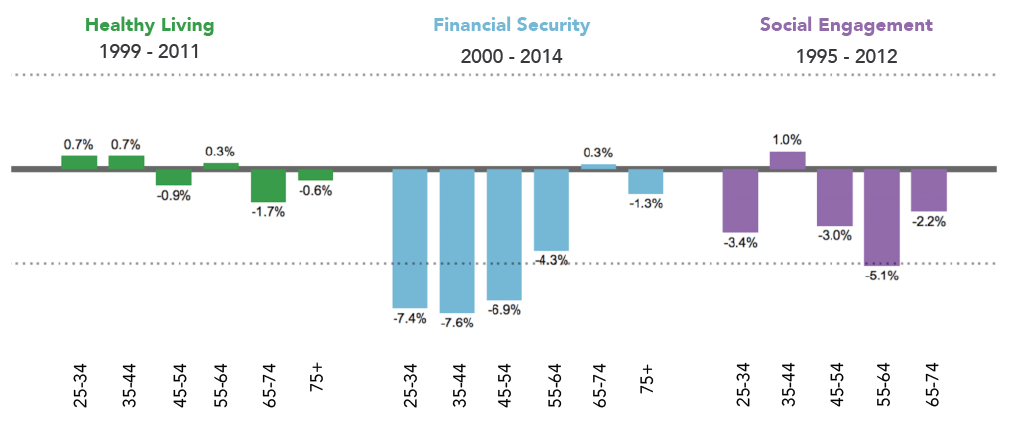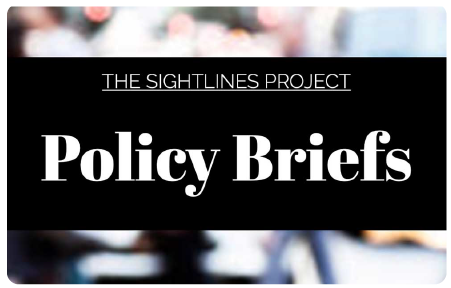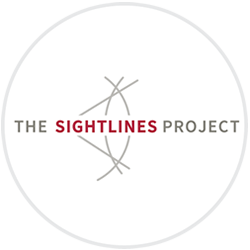The developed world is bearing witness to a 21st century miracle – the real possibility of living well to the age of 100 and beyond. Compelling scientific evidence indicates that living long and living well is most realistic for those who adopt healthy behaviors, are financially secure, and are socially engaged.
THE SIGHTLINES PROJECT investigates how well Americans are doing in each of these three areas over historical time. We assessed the number of Americans who are meeting expert recommendations for healthy living, financial security, and social engagement. These results are intended to stir national debate, guide policy development, stimulate entrepreneurial innovation, and encourage personal choices that enhance independent, 100-year lives.

Change over historical time in % Americans who are doing well in healthy living, financial security and social engagement across six different age groups; dashed lines represent 5 percentage point change which we classified as significant.
FEATURED
SIGHTLINES POLICY BRIEFS Between December 2020 and January 2021, SCL conducted the Sightlines 2021 Survey, which collected data from over 1700 participants in the US to understand whether, and to what extent, their financial security, social engagement, and healthy living behaviors have changed as a result of the COVID-19 pandemic. With over 80 questions, the survey covers a wide range of topics that span from income, debt, work, insurance coverages and retirement planning, to dating, marriage, family, diet, exercise and more. Here, we highlight several policy briefs that used this survey data to answer various research questions related to the pandemic.
Between December 2020 and January 2021, SCL conducted the Sightlines 2021 Survey, which collected data from over 1700 participants in the US to understand whether, and to what extent, their financial security, social engagement, and healthy living behaviors have changed as a result of the COVID-19 pandemic. With over 80 questions, the survey covers a wide range of topics that span from income, debt, work, insurance coverages and retirement planning, to dating, marriage, family, diet, exercise and more. Here, we highlight several policy briefs that used this survey data to answer various research questions related to the pandemic.



